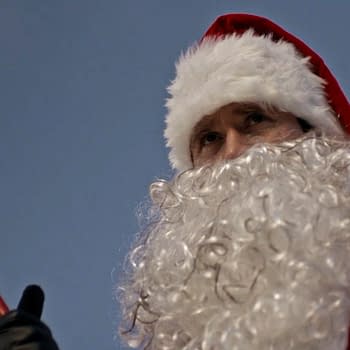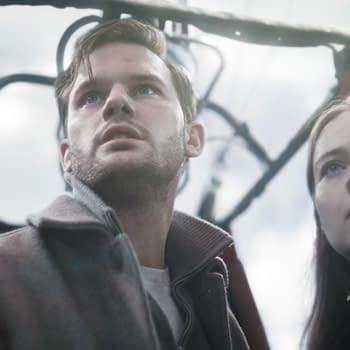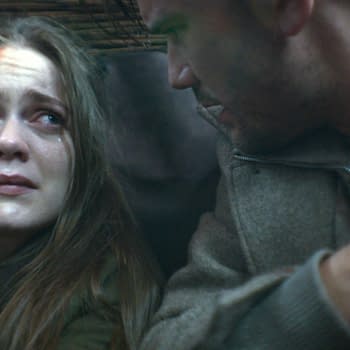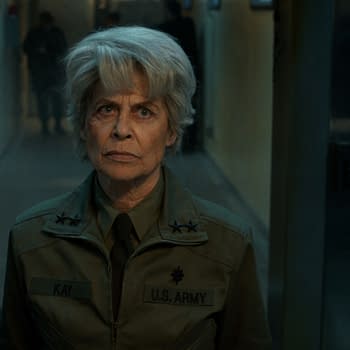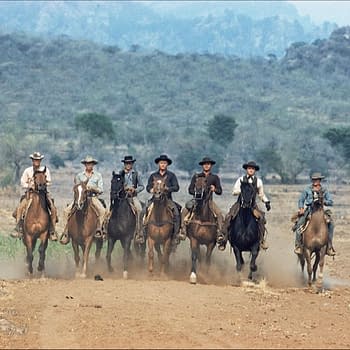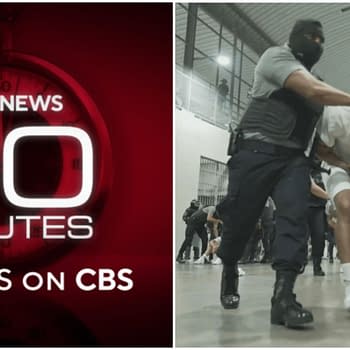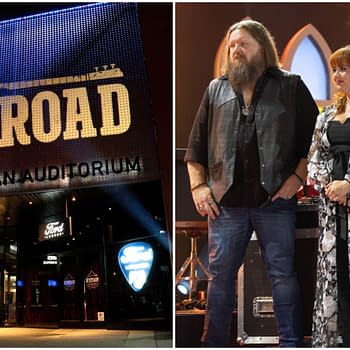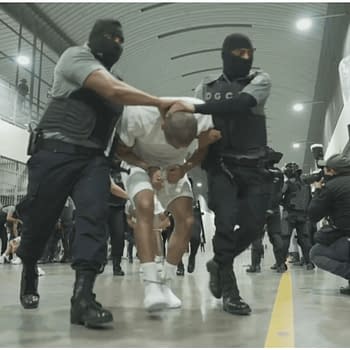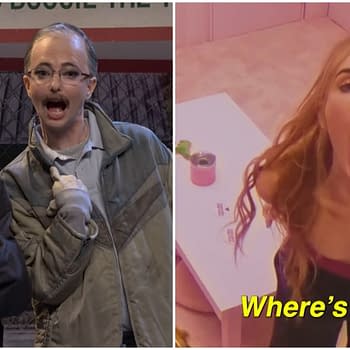Posted in: Netflix, streaming, TV | Tagged: Brett Bachman, house of usher, interview, Mike Flanagan, netflix, the fall of the house of usher
House of Usher Editor on How Miniseries Goes Beyond Poe's Works
Editor Brett Bachman (The Toxic Avenger) spoke with Bleeding Cool on Mike Flanagan expanding Poe's works in The Fall of the House of Usher.
Article Summary
- Mike Flanagan's "The Fall of House of Usher" remixes Poe with a modern, satirical twist on capitalism.
- Brett Bachman talks editing challenges, particularly the macabre masquerade party scene.
- No exterior references were used, with Flanagan striving for a rock show vibe over gothic horror.
- The sequence syncing acid rain with music is a standout moment spotlighting the series' dark tone.
To say that Mike Flanagan's The Fall of the House of Usher is a loose adaptation of the original Edgar Allan Poe short story (and other works) would be an understatement, especially going above and beyond with the nuance and references to the 19th-century writer's other works. Every episode title of the Netflix miniseries aside from its premiere episode is the title of a Poe short story while the premiere episode "A Midnight Dreary" is a direct reference to the opening of "The Raven", which is the title of the finale. It's that kind of detail that impressed editor Brett W. Bachman when Flanagan sold him on the project. The miniseries follows the CEO of a corrupt pharmaceutical company (Bruce Greenwood), who faces his questionable past when his children start dying in mysterious and brutal ways. Bachman spoke to Bleeding Cool about whether there was any external inspiration Flanagan had to create his adaptation and breaks down arguably the series' most macabre scene that took place at the end of the episode "The Masque of the Red Death."
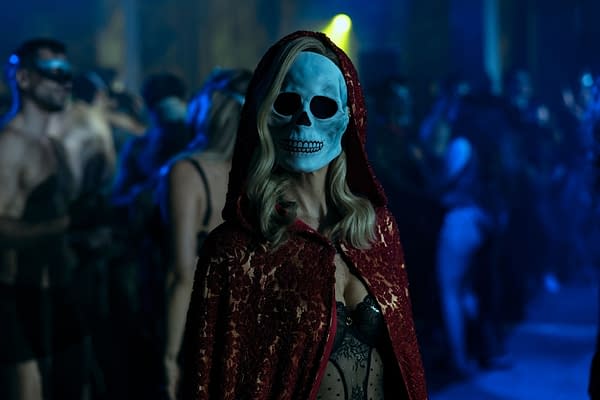
How "House of Usher" Wasn't the Edgar Allan Poe, editor Brett Bachman Was Expecting
Bleeding Cool: Did Mike have any suggestions to reference before taking on 'The Fall of House of Usher' aside from the source material from Edgar Allan Poe that aligns with his TV series vision?
Bachman: Honestly, no, which was the biggest surprise before I started a feature or another project. It's common; you'll have your references, movies, or works that they want to directly throw out and they get a gauge of a certain ambiance or a tone they're going for. The thing that startled me the most about reading the scripts in the first place was how much of a departure they were from my preconceived notions about what the show was going to do and what I'd seen.
I've been a big fan of all the Netflix shows, whether it be 'Hill House,' 'Bly Manor,' or 'Midnight Mass.' I was expecting a script to land on my desk that was dripping in gothic pieces, spooky corners, and then tentpoles. That's basically what I know about Poe, but I remember reading the pilot for the first time and one page in the modern day. This is not the show I was expecting at all and constantly being surprised about where this was going, and I was. I didn't have an opportunity to sit down and talk with Mike face-to-face until we were about a week or two away from the shoot. The thing he led off and what he wanted to convey we kept on talking about if he used an analogy like music. It was like, "If your house is a piano sonata, all 'House of Usher' is a rock show."
I want this big bombastic rock-like quality. I want it to be fun and fast. it's supposed to be satire. It's not a dripping, traditional gothic horror piece, which a lot of our initial audience was expecting. It's a satire of American capitalism and the decay of that. [Mike] didn't throw out any references. He was like, "I want something perfect or despicable." You are following their downfall and their inability to change. The biggest tragedy in this is that their stubbornness and the moral decay in their upbringing have refused them the opportunity to have that ability to see, possess the ability to change and transform and do the morally right thing. All of that's been destroyed by money, greed, and how we want to make a show where you're rooting for the slasher, what do you call the "karmic fantasy," the sense of the moral evil in the world, but finally getting a sense of comeuppance and getting what we all would love a set of boundless injustice to the right.
What was the most difficult sequence to edit in the series?
That's the question that sticks out to mind is the one at the end of episode two masquerade sequence. I remember reading this scene. The first day, I was reading the script and saw the number of extras, and the scope of the entire thing, but tracking all these separate stories that were happening on location. You have Perry (Sauriyan Sapkota), the main character of this episode, as he is trying to throw this party. You have Morella (Crystal Balint) character who's been invited to this thing and is considering infidelity. You have Verna (Carla Gugino), the introduction of the show's arguably antagonist and protagonist, coming to this party, teasing out what her agenda is and what she's all about.
At the end of this episode begins to kind of turn; you see all these harbingers and details that we've been throwing at the audience, suggesting that something is about to go wrong. The mechanics of this thing start to turn, so she's warning him. She is saying that there's still time to change what you're doing. We're teeing up this sense of inevitability and sense of intent and dread while also playing up his complete naiveté like it's going like, "Someone's weird, and I'm not trying to sleep with her." I point out that sense of dramatic irony where he has no idea what's going on. He has no idea of the threat that's permeating and playing that is genuine but likes this sense of dread all around you. As soon as she gives the final warning, then she leaves that room, we have this four-minute sequence that it's all a build, that's all.
Hopefully, if we've done our job right earlier in that episode, we've laid all this groundwork for this ominous, ambiguous threat of what's going to happen with the sprinklers. Hopefully, you don't exactly know what, but you get the sense that something bad is about to happen. We're tracking all these consecutive stories, and then you add on top of this the sense of building. It's compounded by this needle drop that we use. This remix of the Trent Reznor track, and I knew that was our guiding light, so to speak. We have this thing we're going to lay in, and we must reverse engineering and work backward.
When this acid begins to fall, you have this critical point in the songs, like a bass drop at the climax you're building up to. Everything must fulfill the sense of not only the narrative build of driving this but also the emotional quality of it as well. You have a finite amount of time to hit it. It's tracking all these different story threads. It's building suspense and dread. It's also the geography of telling the story, going back to the party and oblivious to what's going on with Verna going around, warning everybody, and the bartenders leading. Finally, once that switch is thrown, you have this chaos of energy, liquid, and death coming down from the ceiling, making sure that the practical effects and visual effects are playing well. Every single shot from the point of acid drops has practical elements, but also visual elements as well. We're working closely with the visual effects department to ensure a sense of linear continuity in the wounds. My assistant editor one day was pulling up acid references of acid burns and showing that editorial to make sure that visual effects were getting it right. Everybody will look at something you have to keep in mind when we're working on these things. The ending with the episode, as macabre as it was with the soup of people, lying about it was one of the more fun things we got to do, at least in editorial, because all these party members and a lot of that visual effect is embellished.
There was no sound or anything. I remember grabbing my iPhone and going around the different people in the office, and I was like, "Would you record some death woes? Would you record some moans of dying?" We got in like our post coordinator or post PA, the assistant editors and my wife makes an appearance in there as well. Lugging that throughout the space and creeping everybody out. As someone who loves the [horror] genre and someone who loves to…I'm so proud of the work we did on that scene. I'm so glad that people got this to stay at work because it was a gigantic effort, and I'm so happy with how that turned out.
It is certainly the most stand-out sequence of 'House of Usher,' the nightclub scene. Flanagan knows how to make those moments come in.
He does, man. I remember reading that, and my wife was in the other room, and I was on an NDA, and I was like, "I can't tell you what this is, but this is going to blow people's minds." It's we're like a few years away from this thing for me and I'm already shaking with excitement because it's going to be so cool."
The Fall of the House of Usher, which also stars Mary McDonnell, Henry Thomas, Rahul Kohli, Samantha Sloyan, T'Nia Miller, Zach Gilford, Willa Fitzgerald, Michael Trucco, Katie Parker, Matt Biedel, Ruth Codd, Kyliegh Curran, Carl Lumbly, Mark Hamill, and Kate Siegel, is available to stream on Netflix.






